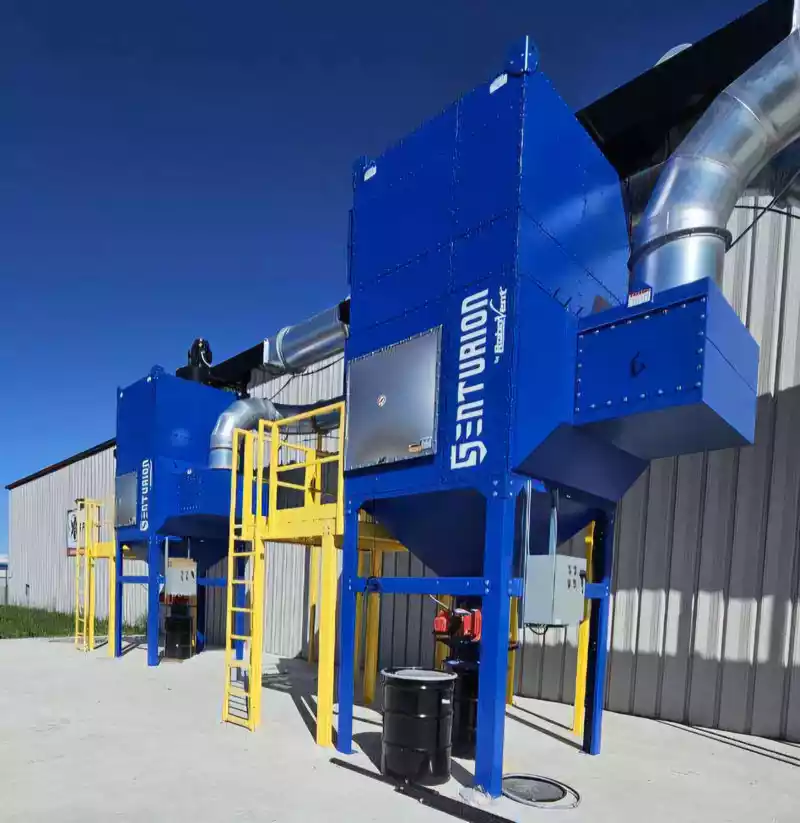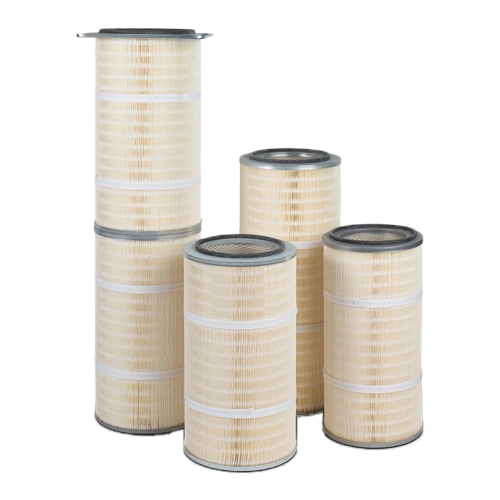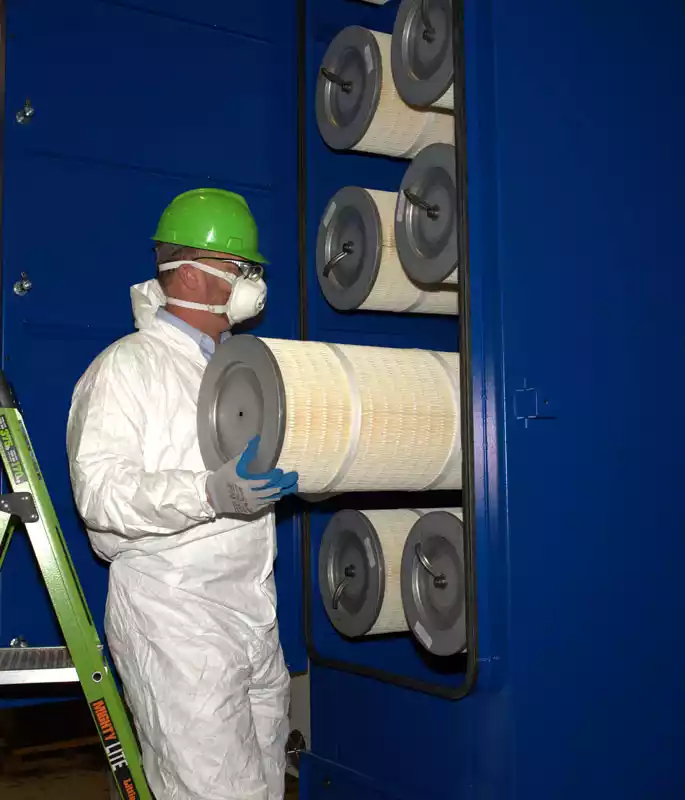Extending the Life of Your Dust Collector
 A properly designed and maintained dust collection system can serve your facility for up to 20 years. Poor maintenance or harsh operating conditions can cut the life expectancy of your cartridge dust collector in half. Here are steps you can take to extend the life of your dust collector and keep your system in top operating condition.
A properly designed and maintained dust collection system can serve your facility for up to 20 years. Poor maintenance or harsh operating conditions can cut the life expectancy of your cartridge dust collector in half. Here are steps you can take to extend the life of your dust collector and keep your system in top operating condition.
The Factors that Impact Dust Collector Life Expectancy
A well-maintained dust collector can last anywhere from 10 to 20 years, depending on various factors. Some systems may exceed 20 years with proper care, while others may require replacement sooner due to operating conditions or lack of maintenance. Some factors that impact dust collector life expectancy include:
- Quality of the System: Higher-quality, well-built industrial dust collectors made with durable materials tend to last longer. Choosing a reputable dust collector manufacturer and ensuring the system is designed for your specific application is key. Newer systems often come with more efficient motors, fans and filtration systems that reduce strain on the system, extending its operational life.
- Maintenance Practices: Regular, preventative maintenance is one of the most critical factors in extending the lifespan of a dust collector. Routine tasks such as filter changes, inspections, and part replacements prevent wear and tear from escalating into larger issues.
- Operating Environment: Harsh environments—such as those with high humidity, extreme temperatures, or abrasive or corrosive dust—can significantly reduce the life expectancy of a dust collector. Corrosion, clogging and component wear occur more quickly in these conditions.
- Frequency of Use: Dust collectors that are used continuously or in high-volume applications will experience more wear over time. Systems running at or near capacity for extended periods may require more frequent repairs and have shorter lifespans.
- Proper Sizing and Load Management: Dust collectors that are appropriately sized for their application and not overloaded will last longer. Overworking a dust collector by handling more dust than it’s designed for can accelerate wear and shorten its life.
How to Extend Dust Collector Life
Fortunately, there are several things you can do to extend the life of your dust collection system. It all starts with proper system design, installation, operation and maintenance.
Start with System Sizing and Design
Dust collector longevity starts with system engineering and design. The size of your dust collector directly impacts its ability to handle the dust load efficiently. A dust collector that is too small will struggle to keep up with the dust generated, leading to clogged filters, reduced airflow, and increased wear on the system. The type, volume and particle size of the dust produced in your facility play a major role in determining the appropriate size of your dust collector. System sizing includes:
- Airflow (CFM): The total airflow, measured in cubic feet per minute (CFM), is based on the capture velocities required for the dust type and the total volume of air that must be moved (e.g., total facility size for ambient collection or volume of air contained under hoods for source capture).
- Static pressure: The system must have enough power to overcome resistance to airflow within the ducts, filters and collection hoods.
- Air-to-cloth ratio: This is the amount of air per square foot of filter area, which determines how much dust the system can handle.
In a multi-point dust collection system, load balancing is also important to ensure even airflow and dust capture from all collection points. Efficient dust collection system design also includes careful attention to capture hoods and mechanisms, ductwork design, and the proper placement of dampers or control valves to regulate airflow, ensuring optimal performance across the entire system.
Ensure Proper Dust Collection System Installation
Proper installation can have a big impact on the longevity of a dust collection system. Even the most efficient design can fail prematurely if the system is not installed correctly. Misaligned ductwork, poorly sealed connections, or incorrectly mounted equipment can lead to air leaks, reduced airflow and uneven dust distribution, all of which put extra strain on the system. This can cause filters to clog faster, increase energy consumption, and accelerate wear on key components like fans and motors. Professional dust collector installation sets the foundation for optimal system performance, reduced maintenance costs, and extended system lifespan.
Optimize the Operating Environment
Optimizing operating conditions is key to maximizing the efficiency and lifespan of your dust collection system. This includes:
- Controlling factors like humidity and temperature, which can affect dust behavior and filter performance.
- Ensuring the system isn’t overloaded with more dust than it’s designed to handle.
- Adjusting fan speeds and balancing airflow across all collection points to improve overall dust capture efficiency and reduce wear and energy consumption.
Take Care of Your Filters
 Filters are the heart of your dust collection system, and proper care is essential for extending the life of the entire system. Regularly inspecting, cleaning, and replacing filters ensures that airflow remains consistent, preventing clogs and reducing the strain on fans and motors. Neglecting filter maintenance can lead to higher energy usage, poor dust capture, and premature wear on key components. By keeping filters in top condition, you not only maintain optimal performance but also significantly extend the system’s overall lifespan. That includes:
Filters are the heart of your dust collection system, and proper care is essential for extending the life of the entire system. Regularly inspecting, cleaning, and replacing filters ensures that airflow remains consistent, preventing clogs and reducing the strain on fans and motors. Neglecting filter maintenance can lead to higher energy usage, poor dust capture, and premature wear on key components. By keeping filters in top condition, you not only maintain optimal performance but also significantly extend the system’s overall lifespan. That includes:
- Timely filter changes: Replace dust collector cartridge filters according to manufacturer’s specifications. Filters should be changed at least annually or more often, depending on the dust load and operating conditions. Change filters when pressure drop indicates that they are loaded, if filter media or gaskets show visible damage, or if you are detecting dust past the filters.
- Clean Filters Properly: Use pulse cleaning systems effectively to remove dust buildup from the cartridges. Make sure the pulse cleaning system is functioning correctly to prevent overloading the filters.
- Inspect and Replace Seals: Regularly check for damaged or worn seals around the housing and cartridge connections. Leaks can compromise performance and lead to more frequent filter changes.
See more: Extending the Life of Your Dust Collector Cartridge Filters
Empty Collection Bins When Full
When dust and debris are collected in the hopper or bin, it must be emptied regularly to avoid overfilling. A full bin can cause dust to back up into the system, restricting airflow. This reduces the system’s efficiency and accelerates filter loading, as the dust collector can no longer effectively capture and filter dust. Overfilled bins can also lead to dust being drawn back into the ducts, fan and other components, which can result in abrasion or damage to these parts, shortening the lifespan of the system. Bins, drums or dust trays should be emptied promptly when full to ensure proper operation and reduce unnecessary wear and tear on the system. A bin monitor is useful for monitoring bin levels.
Perform Regular Preventive Maintenance

See our Cartridge Dust Collector Maintenance Checklist
Address Emerging Issues with Timely Repairs
Addressing minor issues early can prevent larger system failures and extend the life of your dust collector. Ignoring small problems, like leaks or decreased airflow, can lead to major repairs or premature replacement. For instance, a minor leak in ductwork can reduce system efficiency and increase wear on other components. Similarly, decreased airflow can signal filter blockages or fan problems, which, if ignored, can strain the entire system, leading to larger and more expensive repairs down the line. Timely repairs not only help maintain optimal performance but also prevent unexpected downtime and the premature replacement of key components.
See our Cartridge Dust Collector Troubleshooting Guide.
Get Help with Dust Collector Maintenance and Repair

Extending the life of your dust collection system doesn’t have to be a challenge—RoboVent is here to help. With our comprehensive maintenance and repair services, we ensure your system operates at peak performance and remains compliant with safety regulations. Our factory-trained technicians provide everything from routine preventive maintenance to emergency repairs, helping you address minor issues before they become major problems.
Whether you need expert assistance with system inspections, filter changes, component upgrades, or troubleshooting, RoboVent has the knowledge and experience to keep your dust collector running efficiently and reliably. We can help you extend the life of your dust collection system, minimize downtime, and maintain a safe, productive work environment.
Schedule service today.
Contact Us With Your Questions!
SUBSCRIBE TO
BLOG UPDATES








